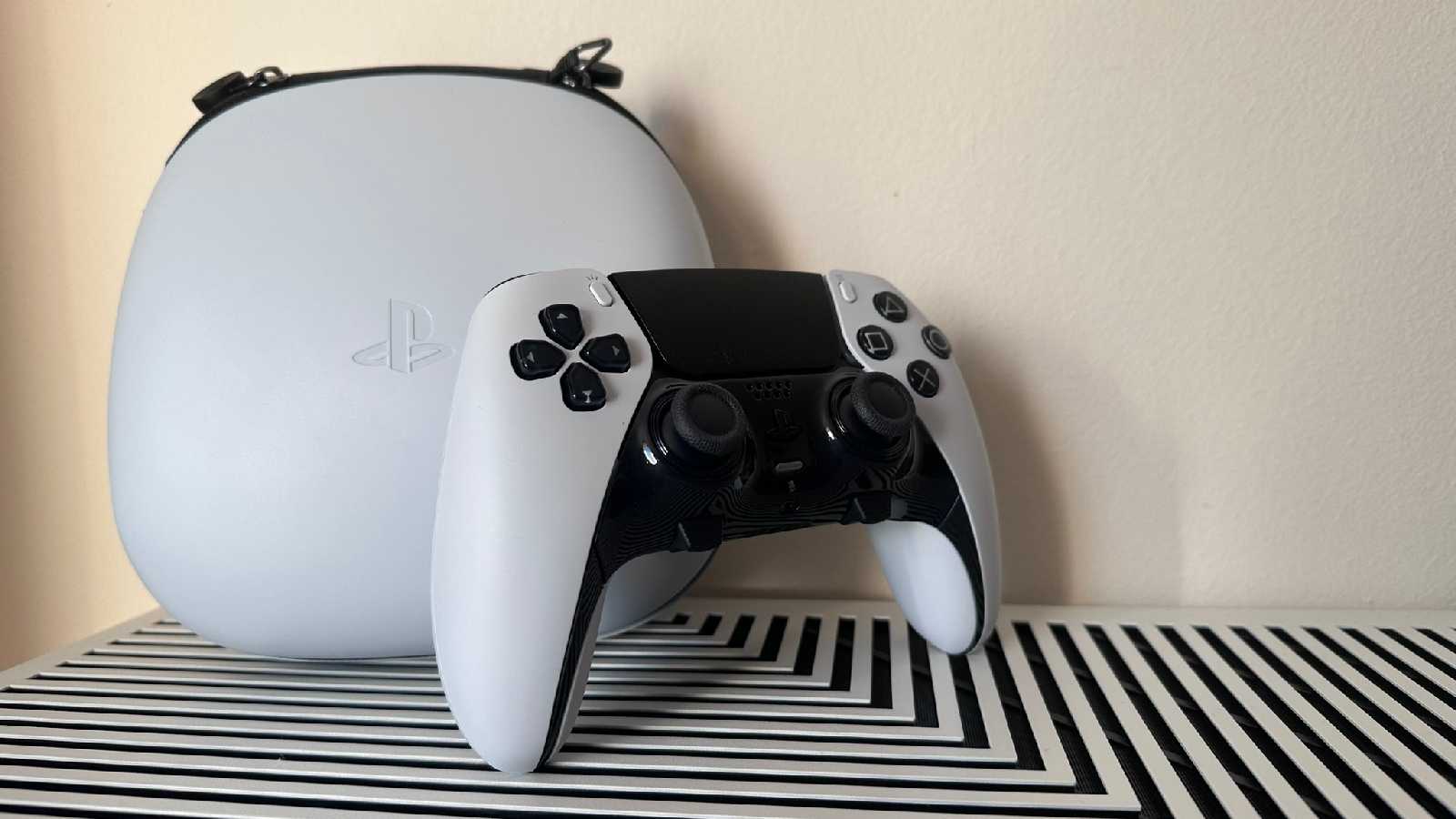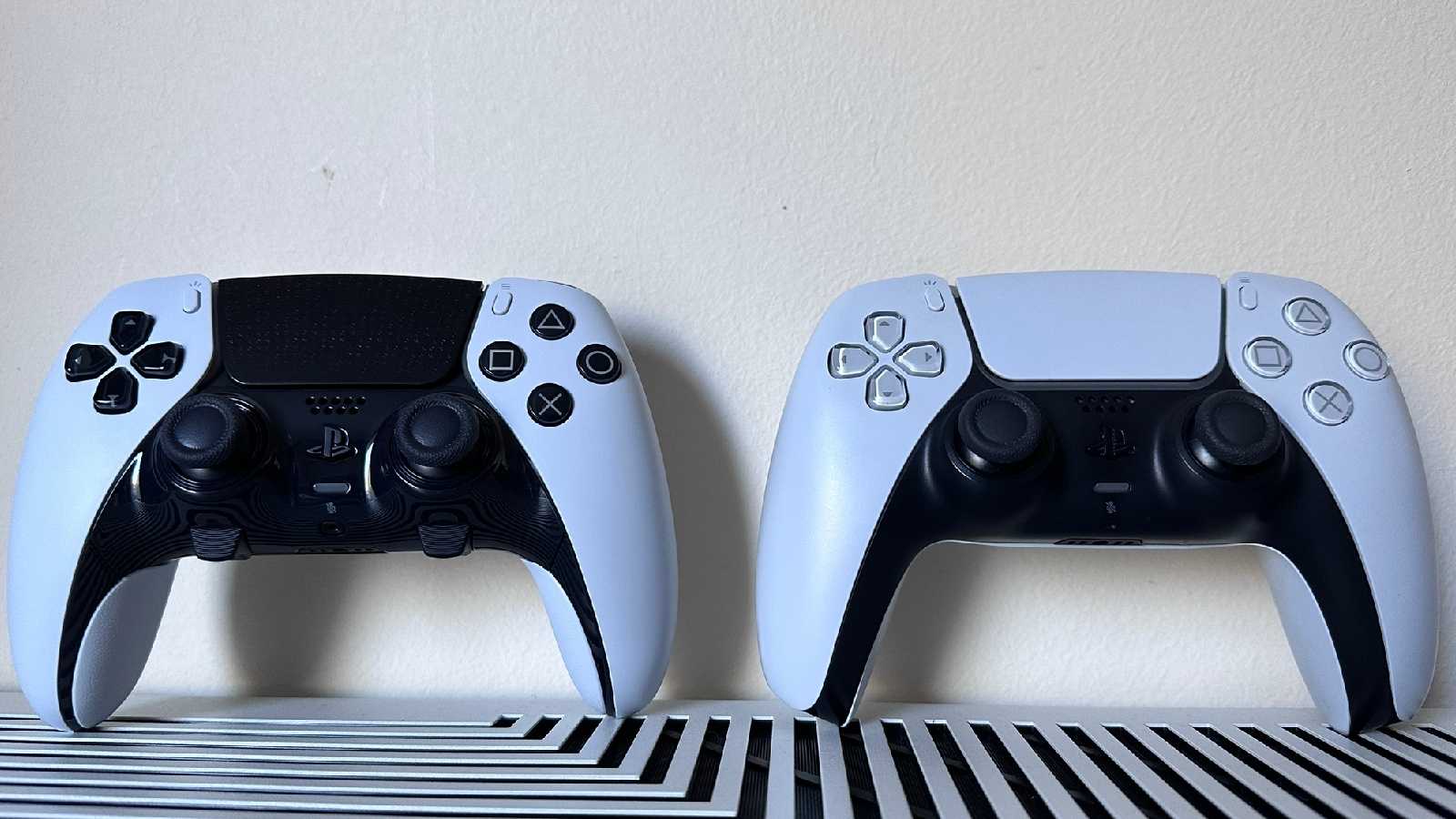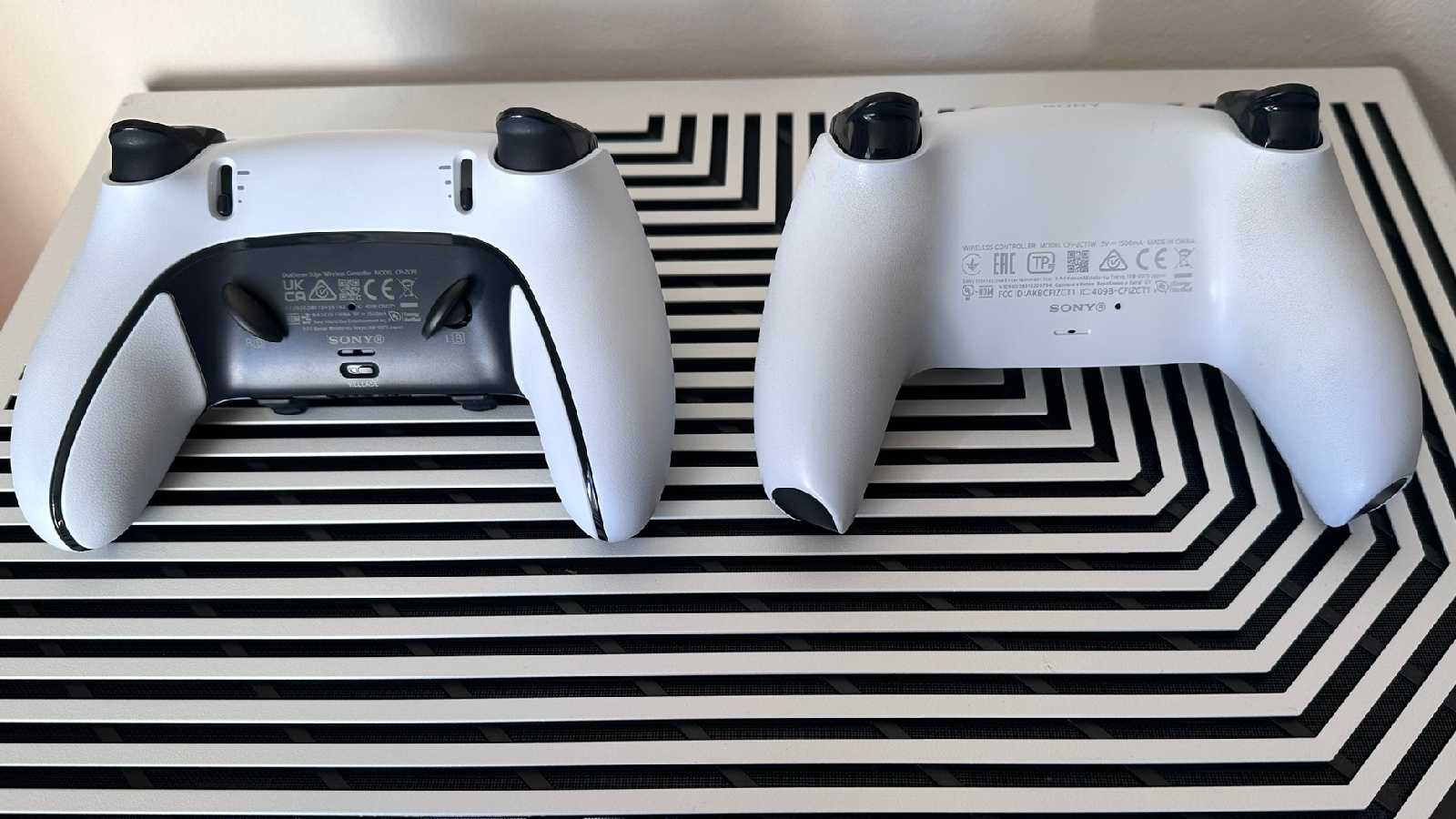DualSense Edge review: Is the PS5 Pro controller worth the price?
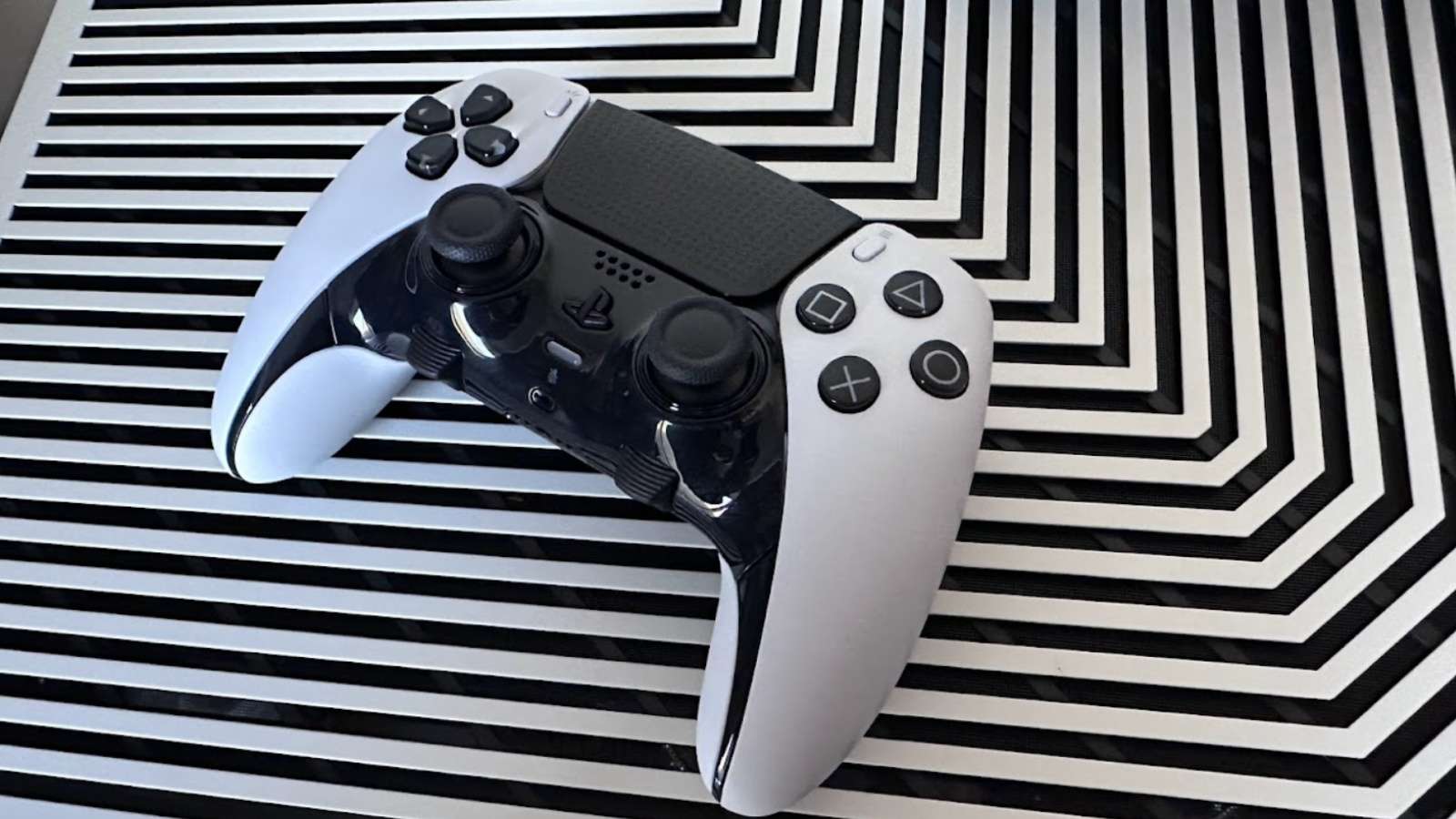 Dexerto
Dexerto Sony’s DualSense Edge is the company’s first attempt at a “Pro” controller like Xbox’s Elite, and other third-party options, but does it impress?
Pro controllers have been around for a while now. Ever since modders began adding more buttons onto pads, with different height sticks, buttons, and more. First-party companies started to take the hint with the advent of the Xbox Elite Controller in 2015. However, since then Sony has stayed mum on a premium option for a pro-style controller, until now.
The DualSense Edge is packed to the gills with additional features for your console. It manages to retain its iconic DualSense design without having all manner of buttons splashed across the top, back and sides, unlike others. But with third-party competition heating up in the form of the Victrix Pro BFG and the Razer Wolverine V2 Pro, does Sony’s offering manage to stand out?
Key specs
- Connectivity: USB-C, Wireless
- Compatibility: PS5, PC
- Battery life: Six hours
- Price: $200
- Features: Two back buttons, two function buttons, customizable stick height, customizable stick caps, three-point trigger stop
Included in the box: DualSense Edge controller, Carry case, USB-A to USB-C charging cable with locking mechanism, 2x heightened convex stick caps, 2x convex stick caps, cable, 2x circular back buttons, 2x paddle back buttons.
Design
The DualSense Edge might not look too dissimilar to a normal DualSense, however, it is finished with a glossy black aesthetic, and sports black buttons, instead of the usual white face buttons. The mid-section of the controller is also outfitted with a piano black finish, while the touchpad is slightly larger than the standard DualSense, and also comes in a black finish, with an iconic PlayStation button design.
Our only gripe with the design is the glossy piano black finish of the mid-section of the controller. Under certain types of light, it appears to be greyer than the rest of the black plastic that’s found on the controller, which is pretty disappointing for a $200 product.
The L1 and R1 buttons remain exactly the same as the original DualSense, while the L2 and R2 buttons are instead slightly textured for extra grip.
Around the back it gets slightly more interesting, You get three dipswitch selectors for the trigger stop functionality, which feel chunky and satisfying to adjust, while you also get holes to input either circular, or paddle-style rear buttons. These rear buttons are made out of metal and are magnetic, which are super-easy to attach. Usually, we find paddle-style buttons slightly uncomfortable, but Sony’s circular buttons feel extremely satisfying by comparison and were what we primarily chose to run with throughout our time with the DualSense Edge.
There is a release button on the back for the stick modules, which just pops off with a lever mechanism underneath easily.
Funky functions
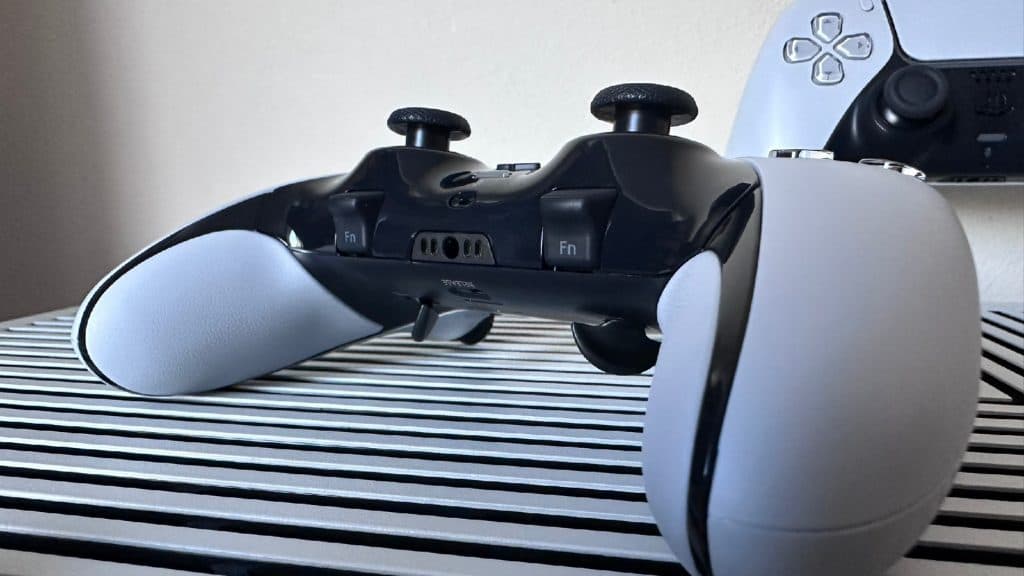 Dexerto
Dexerto Back around the front of the controller, you also have two function keys, which can be changed via software, these come out at the bottom of the controller, and are relatively easy to miss. They feel nice to the touch, and we never overexerted ourselves to reach them.
The sticks however, are also a disappointment. Sony has chosen to stick with ALPS sticks, instead of reaching for a hall-sensing alternative. What this means is that after around 400 hours of play, according to iFixit, the likelihood of stick degradation, and the possibility of stick drift, gets enormously higher.
You can crack open the DualSense Edge and replace the sticks via a module, easily. There’s even a space in the carry case for it, but it’s just a band-aid on a longer-term problem. If you are spending $200 on a controller, you should also expect high-quality parts. Luckily, Gulikit is working on a third-party module to remedy this.
Features
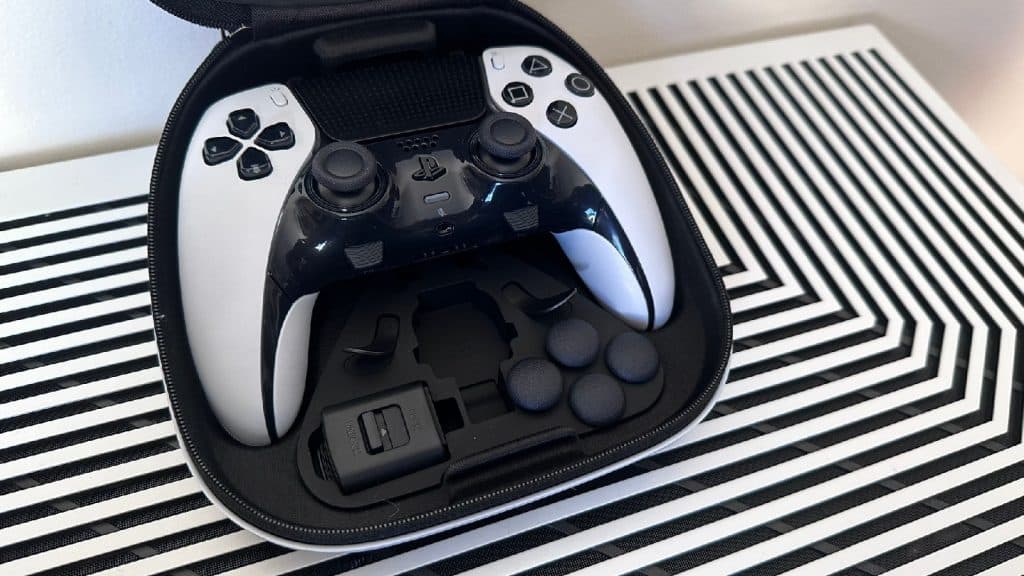 Dexerto
Dexerto The real performance of the DualSense Edge lies in its compatibility with PlayStation hardware. Once paired with the console, you are able to adjust your stick’s sensitivity and deadzones, in addition to remapping the back buttons. You can also map the function buttons for things like splitting audio and party chat, in addition to swapping profiles around.
There are several sensitivity curves that you can apply, ranging from precise, to quick, and even a digital-style input. We popped it on Precise for the majority of our testing. You can also remap the entire controller, if you so choose, but for the most part, we stuck with the default settings. We just assigned the back buttons to some regularly used face buttons to ensure that we never had to take our hands off of the right stick.
You can remap the buttons easily via a contextual menu on PS5, which only took us a few minutes to get our heads around. Saving profiles and swapping between them also went off without a hitch. It’s impressive that Sony has extended support so deeply into their software, and it immediately makes configuring a DualSense Edge much more intuitive than its competitors, like the Victrix Pro BFG.
Many controllers choose four back buttons, but we never really felt like we were missing anything with the two that we were given. What we did miss, was the Victrix Pro BFG’s ability to swap the D-pad and stick around in certain games. While the DualSense Edge might look nicer, it’s not the most fully-featured controller for PS5 when it comes to pure hardware.
Gaming performance
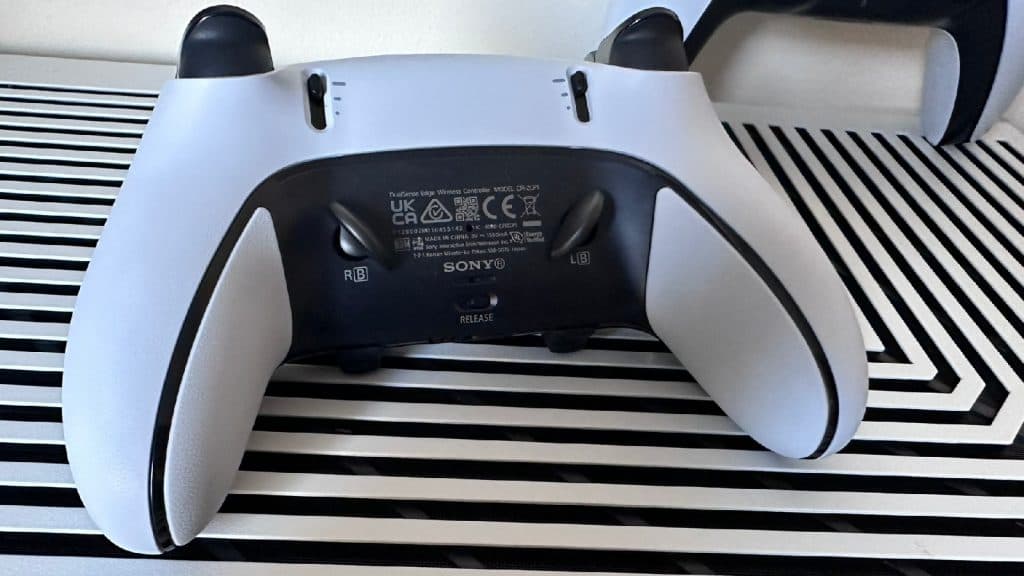 Dexerto
Dexerto With our DualSense Edge tricked out and fully customized, we headed into Fortnite to see how the controller would perform in a real gaming scenario. While we were cutting around the map as Marvel‘s Ghost Rider, the back buttons became incredibly useful for reloading, while the trigger stop functions worked well to take out our targets at a distance, thanks to the “precise” stick movement option that we had set earlier for that particular profile.
The addition of having haptic triggers come in handy when you set the controller to the longest trigger-stop mode in God of War, and we were able to set a more amicable button map to make sure that Kratos could spin around just fine without having to make any far-reaching button combinations.
Battery & charging
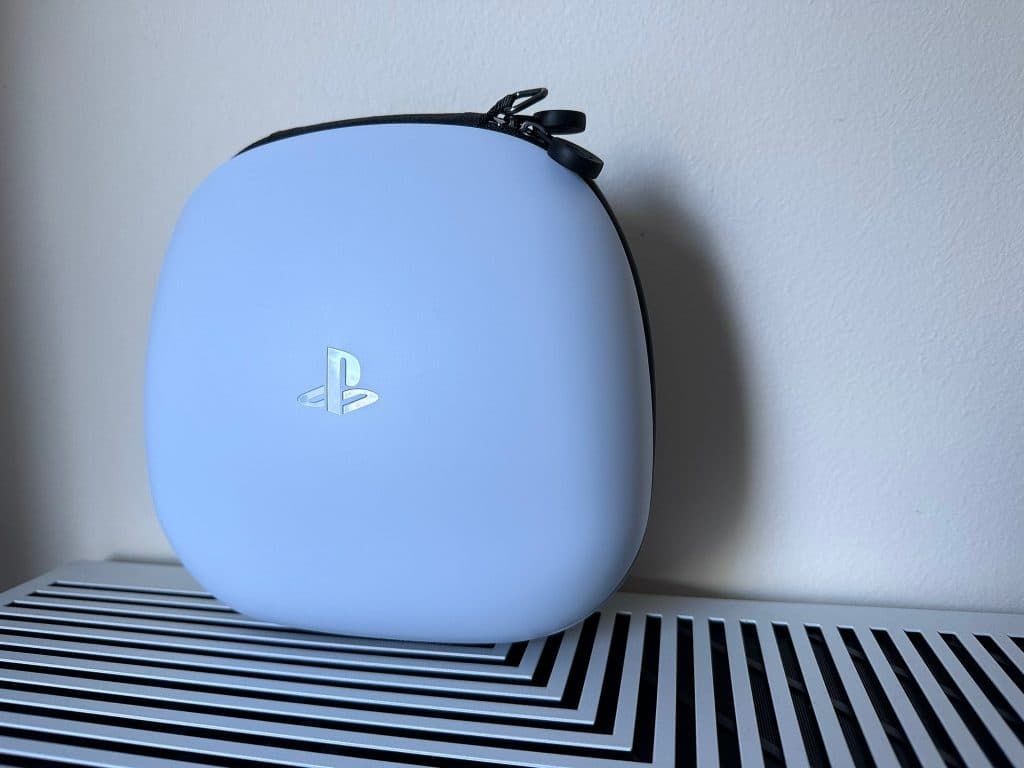 Dexerto
Dexerto We did find that the DualSense Edge’s battery life only lasted around six hours during normal use, which is slightly lower than our normal DualSense battery. This is extremely disappointing, and we wished that there was a higher-capacity battery in the controller so we could use it more.
What’s more, the case does not have any charging functions whatsoever. Where the Xbox Elite series comes with a case that charges the controller wirelessly, you have to tear open a velcro strap on the back of the case and plug in a cable directly to the controller. It would have been a nice extra trimming, but apparently, $200 cannot stretch that far.
Should you buy it?
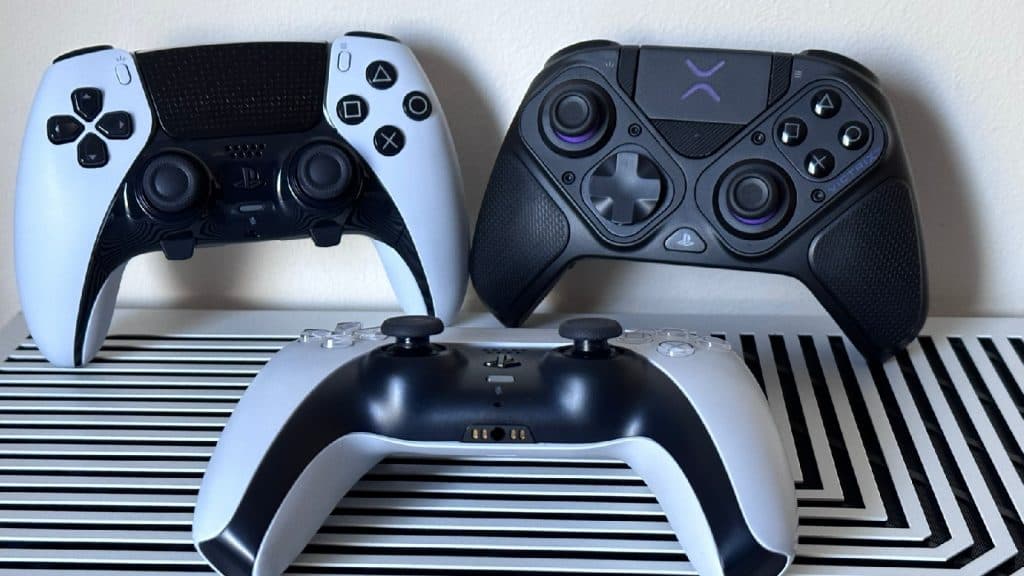 Dexerto
Dexerto The DualSense Edge is an expensive controller. We might be stating the obvious, but for $200, you are getting all of the functions of a standard DualSense, with four extra buttons and a handful of hardware features, but retains excellent software support.
But, for that price, you could instead opt for a Victrix Pro BFG, which we preferred overall to the DualSense Edge. The controller does have great software, and the circular back buttons are a genuinely revolutionary touch in a stagnant market of paddles and buttons, but we just can’t recommend that you spend $200 on what feels like an idea that’s only been halfway realized.
We wished that there were higher-quality parts and greater customization options on the hardware itself. For example, there is not a recessed longer stick in the box, meaning that you’ll simply have to contend with the convex shape, with no way to customize it. Pair that with the relatively meager battery life, and potentiometer-based sticks which are bound to degrade over time, and you get a package that feels premium until you start digging deeper into the detail.
This is far from a bad controller, but at $200, it is a tough pill to swallow, and we think that Sony’s hardware design wizards could have done a little better when it comes to designing a controller made for power users and pro gamers, no matter how lovely and slick the software is, the hardware and price don’t quite match up.
